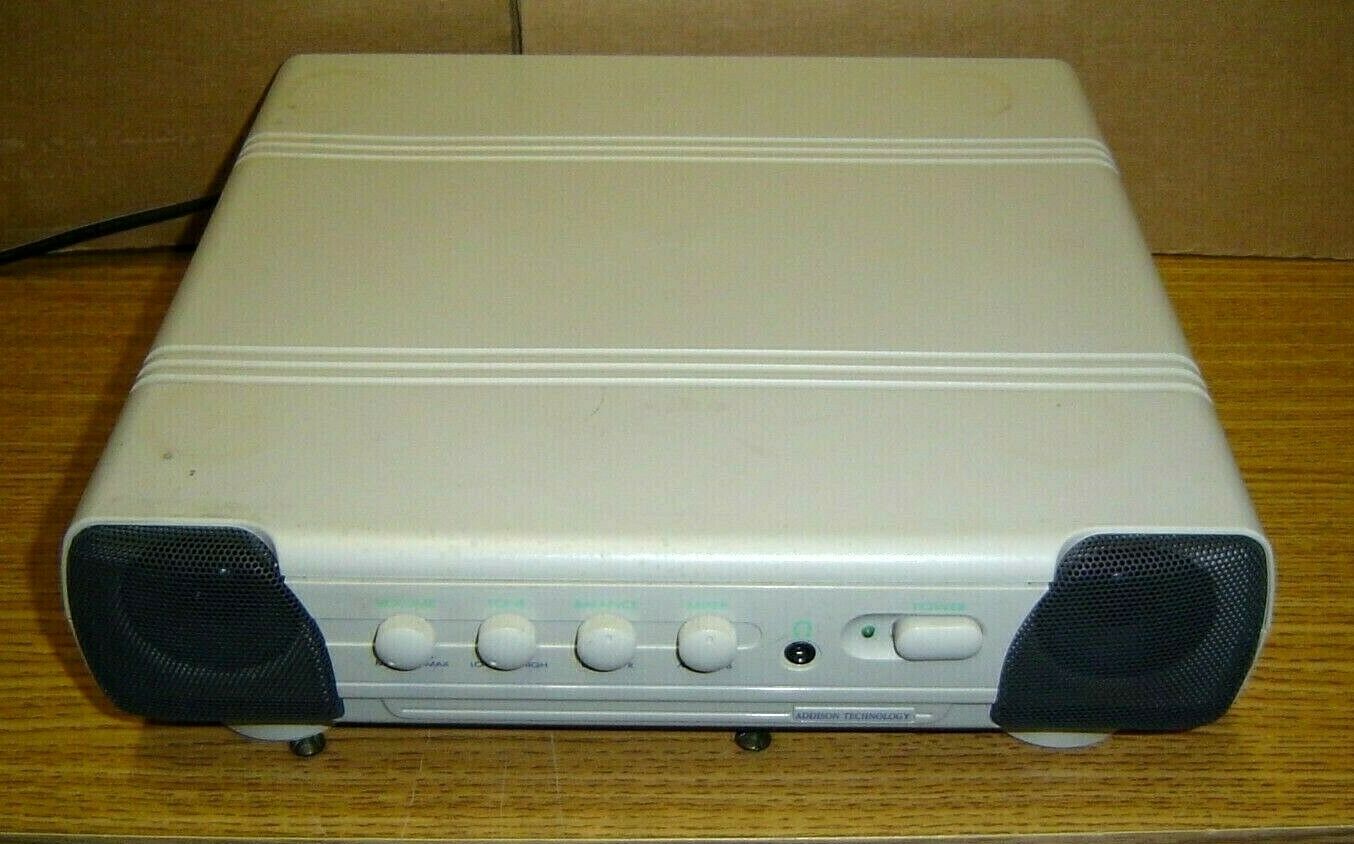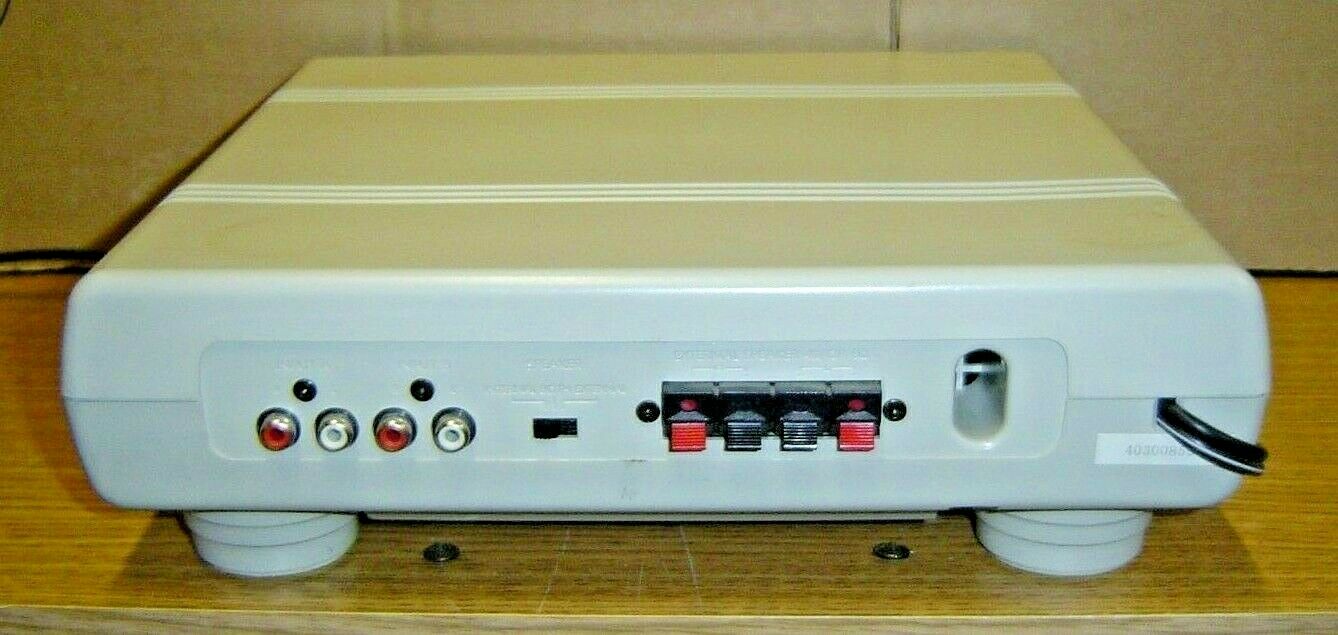SiriusHardware
Veteran Member
My belts and the DIN plug arrived.
I've turned all three of the 2N3904s around and inserted them180 out from the positions indicated by the screen printing. I've checked them over again and measurements now show that the collectors of TR5 and TR7 do now go to +5V which is correct according to the diagram, also TR4's emitter goes (Via 75R of resistance) to the composite output pin. - The display with RGB video is really nice, none of the characteristic smearing or swirling or 'dot crawl' which is associated with the composite or RF output. There is some very slight vertical banding on the overall white background and I think this is probably due to the presence of digital noise on the supply lines to the video circuitry but I am going to leave that for now.
On changing the belts I nearly had a disaster because I went to replace both belts (as you should) and although the original small belt was very thin and came out through the gap between the underside of the flywheel and the other hardware underneath it, the new small belt was the regular thickness and didn't want to go through the little gap which the original thin belt had passed through easily. I also thought I was going to have trouble getting the small belt to ride on the pulley ring on the underside of the flywheel because I could not see what it was doing so for both of those reasons I decided to release and lift out the flywheel. There is a plastic split washer clipped around the flywheel spindle on the other side of the deck so I carefully removed that to free the flywheel and started to pull it away from the deck. Just as it was about to come free something went Kachow! and a couple of parts flew past my nose, but by a small miracle I had the wit and the luck to see where they went and what they were: namely, a little white plastic flange and a spring. You can see what I'm talking about by looking at the attached image.
There was only one place these could really go so I put them back on there and routed the belts and put the flywheel back in but something didn't seem right as the spring was holding the white flange against the underside of the flywheel, liable to cause both drag, noise, and quite possibly a lot of static build up. Eventually, I realised the little flange is a friction fit on the black pin or spike which it sits on so there should be at least a 1mm gap between the white flange and the underside of the flywheel, the flange should not be touching the underside of the flywheel. I originally did not push the white flange down far enough / hard enough when I refitted it so the spring pushed it off the pin / spike and held it against the underside of the flywheel. The job of the flange is to hold the spring in a compressed state so it puts pressure on the elongated white cam below it. When you operate the pause button on and off that cam oscillates between two alternate positions so if I had lost those parts I just wouldn't have a working pause button.
Another thing I looked at was the RS232 / MIDI socket, now these are, or appear to be, the type of socket which a British style telephone plug plugs into. However, and I remember this now, they are NOT exactly the same and a standard British telephone plug won't fit into them without modification, basically the standard plug is too high / thick to fit into these Amstrad specified sockets. You can make a standard UK telephone plug fit, but you have to file / shave certain parts off the plug in order for the plug to be able to be inserted into the sockets. At work we have some sockets of a very similar type and the same pinout / footprint which DO accept standard British phone plugs without modification and I am seriously considering fitting a pair of those - only trouble is they are white, whereas the original sockets are black. Even when you have modified your plug to fit, you then have another problem - how to put it onto a cable, as this requires an expensive specialised tool. The workaround for that is to buy not just a plug but a British phone patch lead - a cable with British telephone plugs already fitted on each end. Cut the lead exactly in half and carefully work on the plug, filing it until it is an easy fit into the socket. If you make a mess of it, try again with the other plug - that's why you cut the cable in half, rather than cutting one plug off one end.
The other thing to maybe consider is to try to identify a 6-contact RJ11 modular socket with the same pinout / footprint and replace these troublesome sockets with a pair of those instead.

I've turned all three of the 2N3904s around and inserted them180 out from the positions indicated by the screen printing. I've checked them over again and measurements now show that the collectors of TR5 and TR7 do now go to +5V which is correct according to the diagram, also TR4's emitter goes (Via 75R of resistance) to the composite output pin. - The display with RGB video is really nice, none of the characteristic smearing or swirling or 'dot crawl' which is associated with the composite or RF output. There is some very slight vertical banding on the overall white background and I think this is probably due to the presence of digital noise on the supply lines to the video circuitry but I am going to leave that for now.
On changing the belts I nearly had a disaster because I went to replace both belts (as you should) and although the original small belt was very thin and came out through the gap between the underside of the flywheel and the other hardware underneath it, the new small belt was the regular thickness and didn't want to go through the little gap which the original thin belt had passed through easily. I also thought I was going to have trouble getting the small belt to ride on the pulley ring on the underside of the flywheel because I could not see what it was doing so for both of those reasons I decided to release and lift out the flywheel. There is a plastic split washer clipped around the flywheel spindle on the other side of the deck so I carefully removed that to free the flywheel and started to pull it away from the deck. Just as it was about to come free something went Kachow! and a couple of parts flew past my nose, but by a small miracle I had the wit and the luck to see where they went and what they were: namely, a little white plastic flange and a spring. You can see what I'm talking about by looking at the attached image.
There was only one place these could really go so I put them back on there and routed the belts and put the flywheel back in but something didn't seem right as the spring was holding the white flange against the underside of the flywheel, liable to cause both drag, noise, and quite possibly a lot of static build up. Eventually, I realised the little flange is a friction fit on the black pin or spike which it sits on so there should be at least a 1mm gap between the white flange and the underside of the flywheel, the flange should not be touching the underside of the flywheel. I originally did not push the white flange down far enough / hard enough when I refitted it so the spring pushed it off the pin / spike and held it against the underside of the flywheel. The job of the flange is to hold the spring in a compressed state so it puts pressure on the elongated white cam below it. When you operate the pause button on and off that cam oscillates between two alternate positions so if I had lost those parts I just wouldn't have a working pause button.
Another thing I looked at was the RS232 / MIDI socket, now these are, or appear to be, the type of socket which a British style telephone plug plugs into. However, and I remember this now, they are NOT exactly the same and a standard British telephone plug won't fit into them without modification, basically the standard plug is too high / thick to fit into these Amstrad specified sockets. You can make a standard UK telephone plug fit, but you have to file / shave certain parts off the plug in order for the plug to be able to be inserted into the sockets. At work we have some sockets of a very similar type and the same pinout / footprint which DO accept standard British phone plugs without modification and I am seriously considering fitting a pair of those - only trouble is they are white, whereas the original sockets are black. Even when you have modified your plug to fit, you then have another problem - how to put it onto a cable, as this requires an expensive specialised tool. The workaround for that is to buy not just a plug but a British phone patch lead - a cable with British telephone plugs already fitted on each end. Cut the lead exactly in half and carefully work on the plug, filing it until it is an easy fit into the socket. If you make a mess of it, try again with the other plug - that's why you cut the cable in half, rather than cutting one plug off one end.
The other thing to maybe consider is to try to identify a 6-contact RJ11 modular socket with the same pinout / footprint and replace these troublesome sockets with a pair of those instead.

Last edited:


